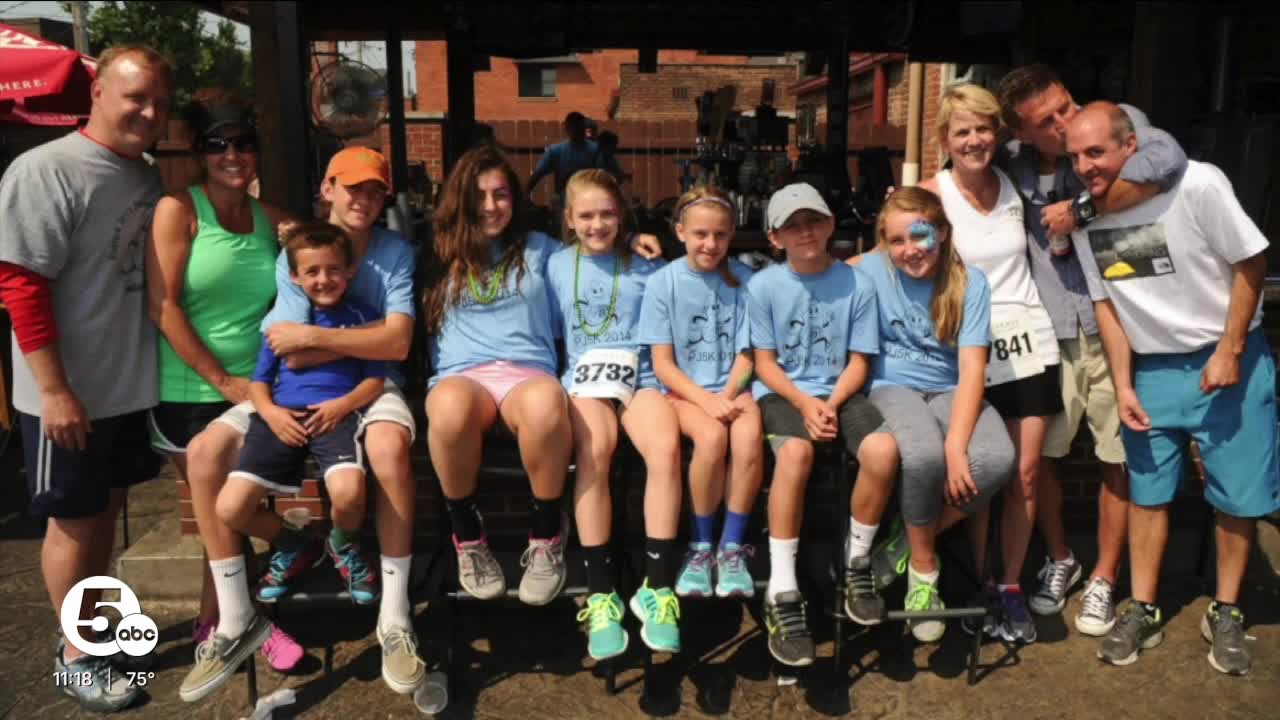CLEVELAND — Heartbreak turned to hope for a Cleveland family after a tragedy that shook their world decades ago turned into an annual race, with the help of friends, to bring awareness.
On Nov. 7, 1991, Katie Kalish and her family received life-changing news. Her brother, Patrick Joyce, was a freshman at the University of Kentucky when a phone call changed everything— the 18-year-old had died.
“It was a complete shock to our family. He went away, he was healthy, happy, having a great year, there were no signs,” said Kalish. “We thought he passed away from cardiomyopathy,”
But now Joyce’s family believes he died from Long QT Syndrome.
“The syndrome occurs in about one in 2,500 people,” said Dr. Peter Aziz of the Cleveland Clinic.
Patrick’s niece, Meredith Joyce, was 13 years old when she experienced shortness of breath while playing basketball. It wasn’t cardiac-related, but testing revealed Meredith Joyce had Long QT Syndrome.
“My last test was an EKG, and the EKG is what showed it. So then, the next day I got in to see Dr. Aziz and he diagnosed me," said Joyce. "When I got diagnosed, it’s genetic, so my dad got diagnosed as well,” said Joyce.
Aziz said some triggers can induce arrhythmia, but why and when it happens, he explained, is a little more elusive.
“For Meredith’s uncle, his trigger was the alarm clock. He was woken up in his dormitory by an alarm, and that triggered his arrhythmia and, therefore, his cardiac arrest, “ said Aziz. “For whatever reason, it was that day, that particular morning that caused the arrhythmia. So even though the triggers are known to cause vulnerability, they obviously don’t in every single circumstance."
The death of Patrick Joyce changed the lives of his family and his close-knit circle of friends. Cathy Higbee was among the friends who grew up in the West Park neighborhood of Cleveland and wove an unbreakable bond of friendship.
“Losing him affected us very profoundly,” said Higbee.
Over dinner, Higbee and another childhood friend decided to take steps to honor their friend.
The Patrick Joyce 5k took off.
Just days ago, the 14th annual race took place. The race raises money for research, scholarships, and awareness of Long QT syndrome. It also stresses the importance of CPR.
“You try to take something negative and find whatever kind of positive you can in it, and with that, it’s the funding of the research. Now, it’s evolved to making sure people are aware of the importance of CPR because it could happen to any of us,” said Higbee.
In a twist of fate, Kalish’s twin daughters decided last year to attend the University of Kentucky after touring the campus.
“You could see how much it was weighing on my mom the entire time we were walking around campus,” said Grace McIntyre, one of Kalish's daughters.
“How cool would that be to walk the same way that he did and all of that? So, we went and toured it, and I fell in love with it. I was like, 'I know that I’m supposed to be here,'” said Olivia McIntyre, Kalish's other daughter.
The twins are preparing to return for their sophomore year at the university.
Family and friends are now on a mission to help others and stress the importance of CPR.
“CPR saves lives,” said Kalish.
Since its inception, the PJ 5K has raised over $400,000 to support Long QT Syndrome research and fund the Patrick Joyce Scholarship and St. Edward High School.
“But the event’s most profound legacy lies in its impact on awareness and prevention. After Patrick’s story came to light, the University of Kentucky implemented mandatory CPR training for all students living in residence halls...A direct result of awareness built through this movement.“ a PJ 5K press release stated.





